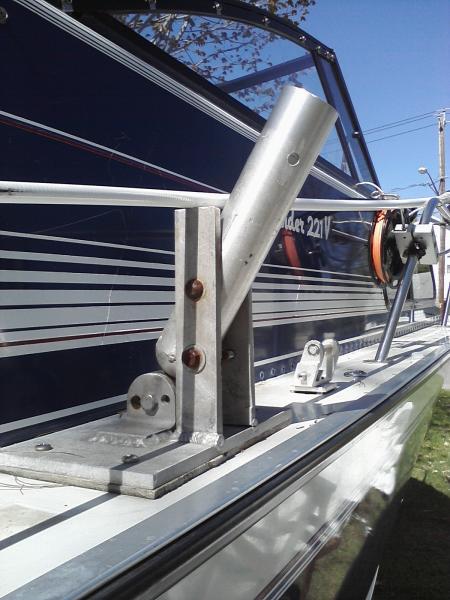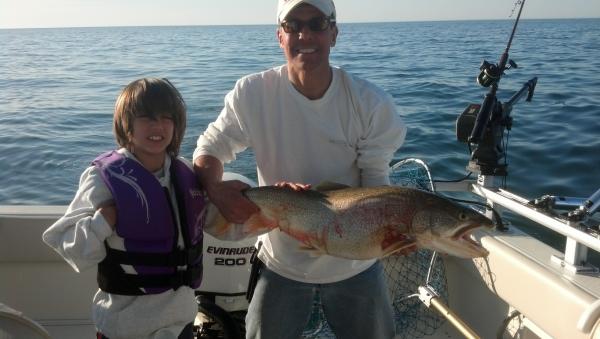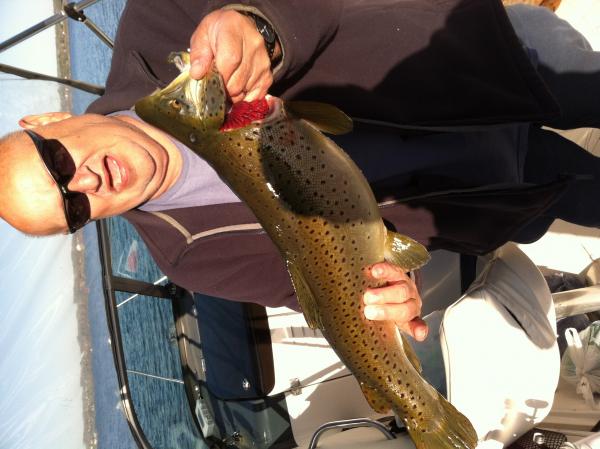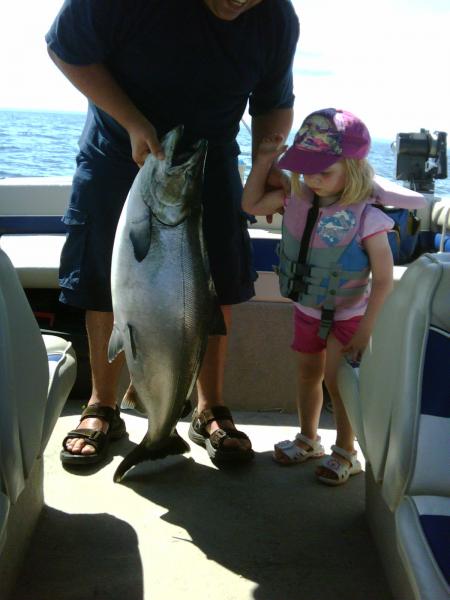-
Posts
13,810 -
Joined
-
Last visited
Content Type
Profiles
Forums
Events
Gallery
Store
Everything posted by Sk8man
-
A number of marine suppliers (maybe West Marine for example) carry non-skid tape material for use on boat trailers and the attached "walkways" some of them have. It would probably be somewhat similar in appearance and function.
-
Lakers are largely bottom oriented and often found in deep water (100ft plus depths) and they are often found near or within bait pods. During the Spring however large lakers come into the shallows looking for baitfish in there spawning and therefore can be found at a variety of depths and on bottom in shallow water as well as within a variety of points within the water column. They are "opportunists" and they have been known to eat sunfish, small bass, perch, and even small pike and other smaller trout in addition to the usual alewives and rainbow smelt. They also can compete for food with larger species such as large pike without concern in the shallows. Their habits are similar in each body of water (Great Lakes and Finger Lakes for example) but there are also variations in each lake too (habitat, bottom characteristics, food amounts/availability etc. In the Finger Lakes lakers can be caught in the Spring by nearly all of the usual methods of trolling (top lining, lead core, downriggers, dipseys on mono as well as wire, flashers and fly/squid, cowbells/peanuts/spin-n-glows etc.) and also quite easily by still fishing with English hooks and sawbellies (alewives) or smelt either drifting or anchored, and very successfuly by "pulling" or "jerking" copper wire either by hand, on an automatic reel such as the A &S automatic, or an old fashioned victrola rig using spoons such as the Pfleuger 4 or 5, Ace spoon tied directly to the copper wire, or flutter spoons or twin minnows/flatfish on mono leaders all banging bottom or close to it with or without weight attached where the copper meets the leader. Jigging for lakers can occur all year and is done by using regular rods and reels as well as "adapted" ones either anchored or drifting with a fairly heavy jig and a 3-5 inch rubber shad or other "soft bait" immitation. All this can be done in relatively shallow depths in the Spring but in recent years the water clarity has dictated deeper troilling with everything when exceptionally clear conditions exist (as noticed recently all over) as the larger fish are usually there while more juvenile lakers are often found out deeper. As the season progresses (late Spring/early Summer) the use of Seth Green rigs is very effective using multiple leaders/lures ( 5 are allowed per rod) and flutter spoons, and wire rigs with dipseys and flasher/fly combos, copper wire rigs and braid wth Spin Docs, Cowbells etc. as the fish move out to deeper water. Thermocline (Seth Green) rigs and copper jerking are seldom used on lake Ontario but all of the other methods mentioned apply there as well as numerous others. I may have missed something but this is basically it. Others may have things to add or other different methods I failed to note (I'm "old school")
-
Power Marine in Canandaguia. 394-3590 On North Road which is off Canandaigua-Rochester Road (Route #332) See Rick
-
-
I guess we're all having our little screwups with the boats...I just took mine in to be looked at....switch that raises and lowers motor (on motor itself) stopped working last time out...better now than at height of season or during the derby
-
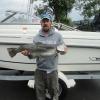
Sandy Creek Legacy Report May 4-5
Sk8man replied to Legacy's topic in New York Fishing Reports - Lake Ontario (South Shore)
-
-

5-4-13 Shakedown
Sk8man replied to LongLine's topic in New York Fishing Reports - Lake Ontario (South Shore)
Tom, Nice report and pics....the old "trebles in the net syndrome" looked familiar as well -
My son and I went out last night and fished for them at 12:01 AM. We were using our usual rapala like lures which normally get us some good keepers. I had only one hit and my son caught a largemouth about 3 pounds (released) and that was it. We fished for about 2 hours or so ( I had to go trout fishing on Canandaigua at 6AM ish). The wind came up wicked out of the west and we were on the east side so we got hammered and I think that was a lot of the problem. I am also wondering if they are still in the streams spawning because everything seems as though it is "behind" so far this season..
-

Sodus 5/4/13
Sk8man replied to rdebadts's topic in New York Fishing Reports - Lake Ontario (South Shore)
70 ft down (over whatever) and 80 ft down etc. that they were running the lures at and 10 color leadccore line (lead weighted line with dacron type covering) which is colored differently every so many ft so you know how much line you have out. 10 different colors is theusual maximum folks are able to get on a reel. It is used for "slight to medium" depth trolling most of the time. -
Browns are quite vulnerable to lamprey attacks because of their bottom oriented feeding/staging habits and preference for wide range of water temps which brings them into contact with lampreys at a higher probability rate than other species that are more suspension oriented and higher ranging fish in the water column.
-
I guess I'd just as soon go with opinion than spend a couple hundred bucks on a book.
-
How does your speed seem to compare to theirs? You may be going a bit fast for this time of year Try 1.9 to 2.3 for starters. How far back and how deep are you running your lines? Try running them further back at about 125-200ft in the clear water. Try going on diagonals from close in (e.g. 10ft of water) out to deeper water. Do "s" patterns in your trolling. put your motor in neutral every once in a while briefly and then give it a little gas sometimes they will hit with the change of speed. If it is dead calm try "rocking" the boat as you troll. Change lures frequently (type, size and color) and change the running depth each time too until you start hitting them. Run your boards as far from the boat as practical (depending on boat traffic etc). If all that doesn't work...try fishing in a different area.
-
-
yes and maybe even more in the clear water
-
12:01 at Honeoye with my son tonight. I'm hopeful... last year I had two good keepers and one that got off at the last moment on the first day but the water temps are different this year so who knows? Its fun anyways. I'm also going after the trout early tomorrow morning on Canandaigua so it doesn't look like a whole lot of sleep tonight...especially if the walleye action is there. Good luck fellas!
-
The water all over the place is being reported as very clear so you may want to run your lines further back and run a little deeper water. The fish you are marking in that depth may or may not be trout for one thing. When I use weight I usually just place one or two (at most) #3 split shot about 2 or three ft above the lure. Unless you are running very fast this should keep you well beneath the surface. Light line is also a good idea (8-10 lb) for most situations with a fluorocarbon leader (6-8 ft long) and very small swivel snap.
-
I run dipseys from wire and braid on 6 1/2 ft. roller tip rods successfully but the most I run is 9 rods....not 18 like some of the folks and I'm real careful on turns
-

Bear Creek
Sk8man replied to maisie's topic in New York Fishing Reports - Lake Ontario (South Shore)
Still beats sitting home like last winter -
The Furunos are what most of the "big boys" on the ocean use but the price tag keeps them out of reach for a lot of us sport fishermen....great units though


